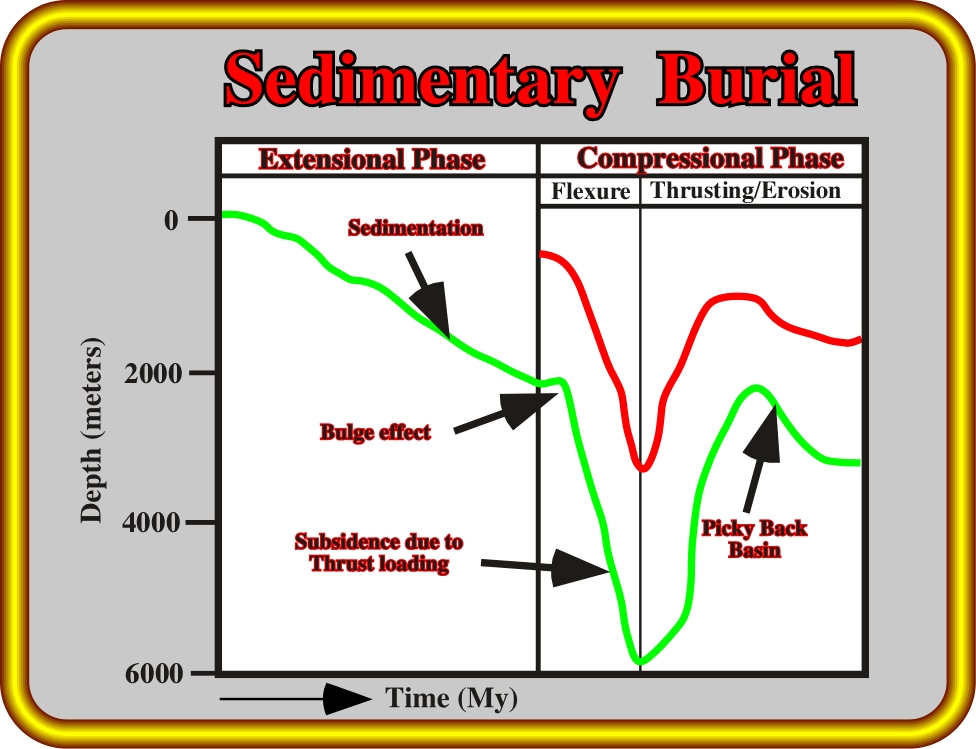
Universidade Fernando Pessoa
Porto, Portugal

Basic Principles in Foredeep & Foldbelt Basins
Geochemists know very well the history of the sedimentary burial of foredeep basins, since it is fundamental to the evaluation of the maturation of the organic matter of the generating petroleum sub-system, i.e. the organic matter of the potential source rocks. As illustrated in fig. 14, taken from Vially (1990), the burial profile underlines the main geological events of the foredeep basin:
(i) The lengthening or the thermal contraction of the lithosphere.
(ii) The peripheral bulge effect.
(iii) The flexural subsidence.
(iv) The uplift.
(v) The formation of the “piggy-back basins” etc.

Fig. 14- The subsidence induced by thrusting can be broken into two major phases: (i) an extensional and (ii) a compressional phase. At the onset of the compressional phase, the bulge effect, as well as the uplift and erosion during the thrust compressional phase, are easily recognized on the sedimentary burial plot.
The foredeep basin starts with the compressional phase. The extensional phase is associated with the substratum, which can be a divergent margin overlying rift-type basins or a back-arc basin, etc.